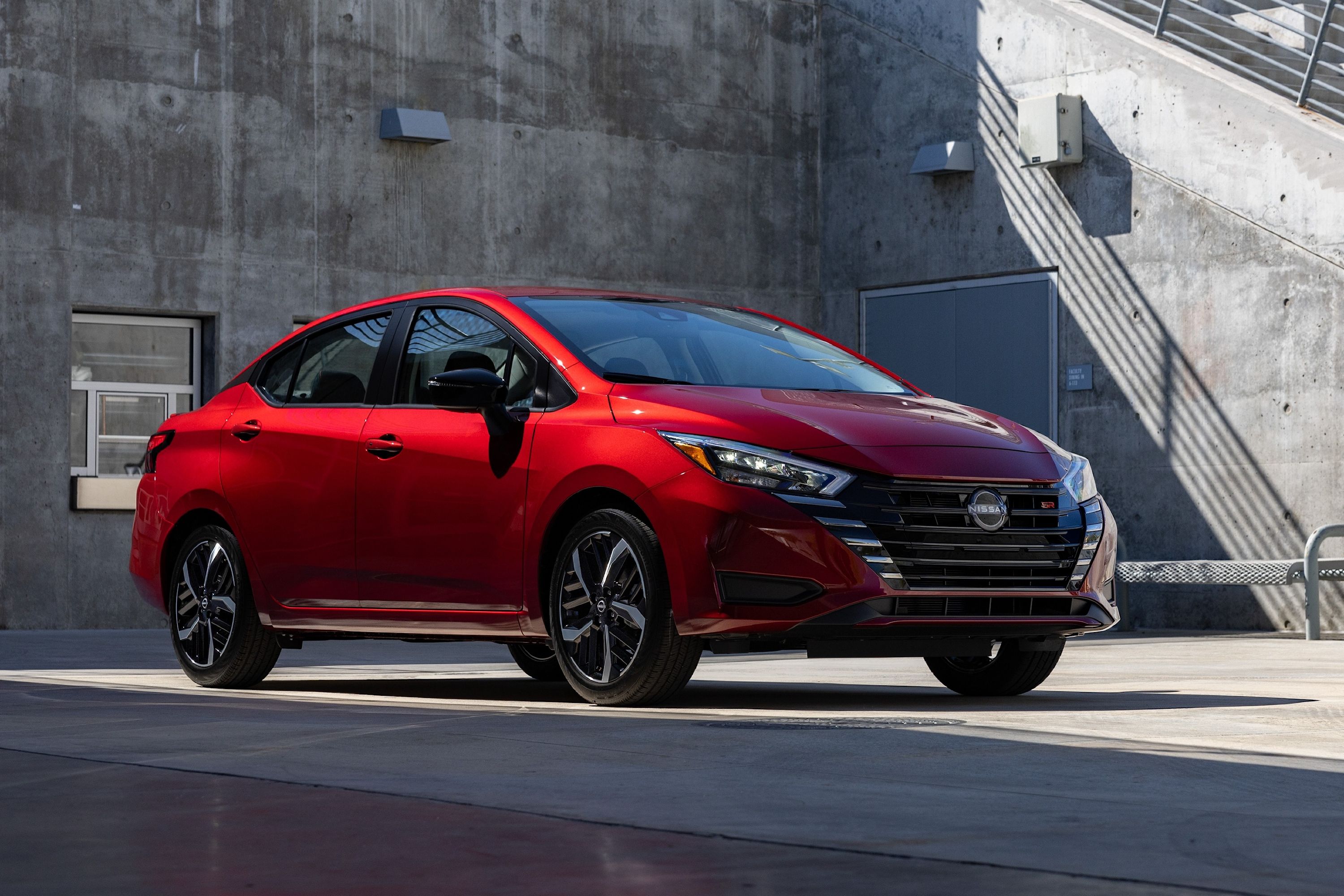
There isn't a criticism of the previous generation Nissan Versa that we haven't heard before. It looked cheap, felt cheap, was barely faster than walking, and only really appealed to rental car customers who wanted the least expensive option available. It was the least expensive new car you could buy in the US and it wasn't difficult to see why. That has all changed with the 2020 Nissan Versa.
Nissan's smallest sedan enters its third-generation with a complete redesign that focuses on making it feel better than just a rental fleet special. It's more expensive than before but starts at just $14,730 for the manual S model and even the top SR trim level starts at less than $19,000 (before destination). In fact, after driving a 2020 Versa SR for a week, we're convinced that it's the best new car available for less than $20,000. Here's why.
It Looks Much Cooler
The Versa sports Nissan's "Emotional Geometry" design language with styling elements such as the V-motion grille, boomerang headlights and taillights, and floating roofline. It's a clear and dramatic improvement over the outgoing Versa and in the top SR trim level, it could almost be considered "sporty." The SR trim level gets nice touches including LED headlights, 17-inch alloy wheels, and a small lip spoiler. Paired with a bright hue like Electric Blue Metallic, the SR trim is rather attractive for a sub-compact sedan.
The Interior Doesn't Feel Cheap
There is no getting around the fact that the Versa is still one of the least expensive new cars you can currently buy in the US so don't get in expecting to find leather seats and fancy trim materials. But Nissan has managed to make the Versa's cabin feel more premium than it actually is. The SR trim features high-quality cloth seats with orange stitching, a leather steering wheel, and leather on the dashboard. Yes, there is plenty of hard plastic throughout the cabin but the main touchpoints, at least on the SR, feel satisfying.
Great Technology For The Price
It may be the least expensive model in Nissan's lineup but the Versa doesn't skimp on tech. Both the SV and SR trim levels include Nissan Safety Shield 360, which bundles a backup camera, automatic emergency braking, pedestrian detection, rear automatic braking, lane departure warning, blind-spot monitoring, rear cross-traffic alert, and high beam assist. Adaptive cruise control and heated seats can be added for an additional $300.
In terms of entertainment, Nissan's seven-inch touchscreen display is pretty basic but does include Apple CarPlay and Android Auto support, allowing you to access the most up-to-date infotainment features. A cool digital tachometer can also be used to display trip and infotainment information.
It's Roomy Enough
The Versa is a tiny car, making it easy to navigate tight parking lots. Rear legroom has actually decreased from the previous generation to 31 inches but trunk space is highly competitive for this segment with 14.3 cubic feet. There is no more Versa Note hatchback model but the sedan does feature 60-40 split-folding rear seats that open up to provide 38.3 cubic feet of storage.
Peppy With Amazing Fuel Economy
Nissan has managed to increase the output of the Versa's 1.6-liter four-cylinder engine for this new generation but it still isn't a powerhouse. The 1.6-liter mill puts out 122 horsepower and 114 lb-ft of torque, which are increases of 12 and seven percent respectively. Even with just 2,599 to 2,729 pounds to haul around, the Versa takes a sluggish 9.6 seconds to hit 60 mph. If you are used to driving sports cars, the Versa will feel painfully slow but most drivers will have no problem keeping up with traffic.
As a result of the lack of power and the lack of weight, the Versa sips fuel like a Kardashian eats carbs. Nissan quotes the fuel economy for the CVT-equipped models at 32/40/35 mpg city/highway/combined but driving on 45-50 mph roads with limited traffic light encounters, we saw more than 51 mpg on the car's display.
